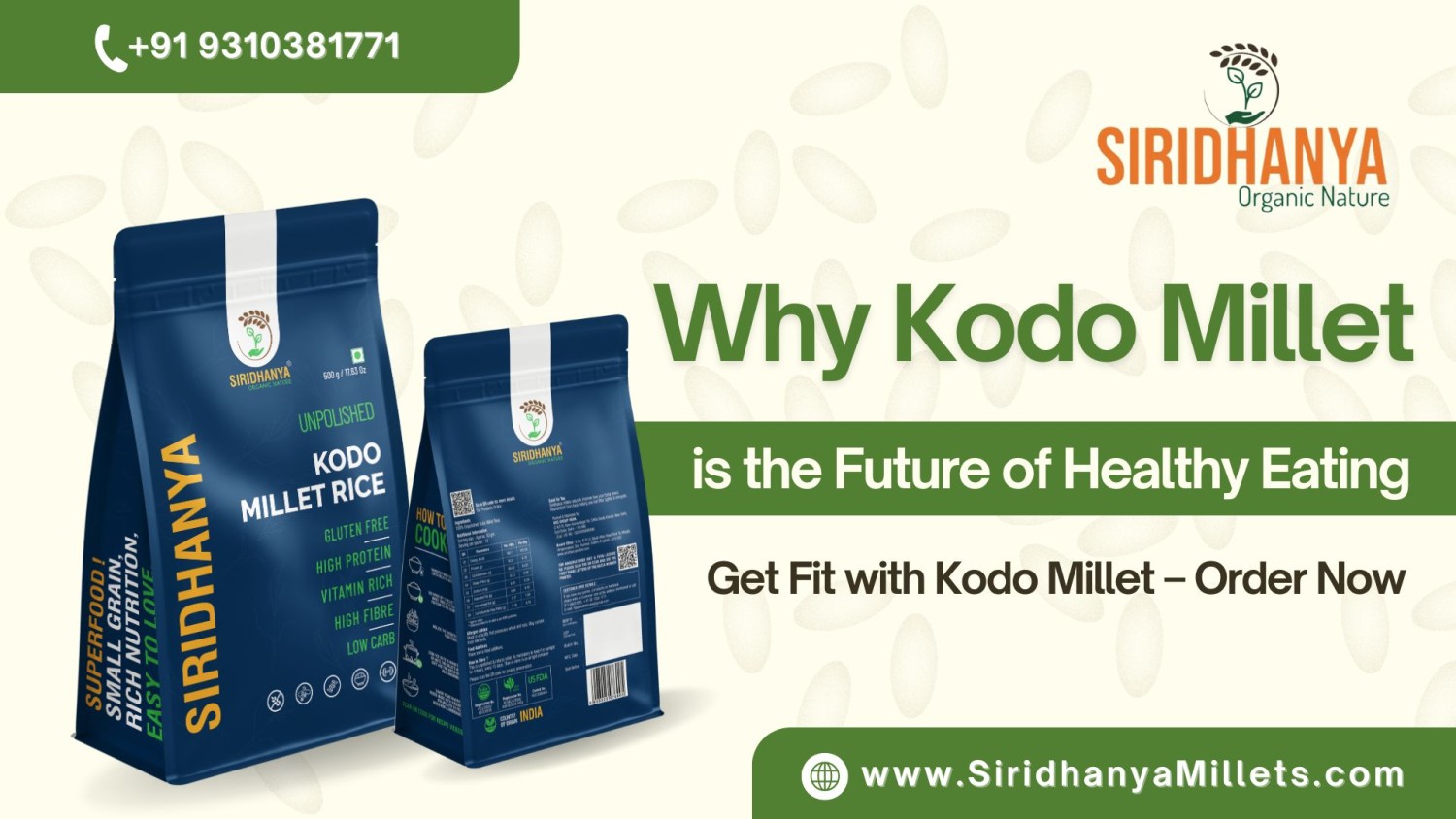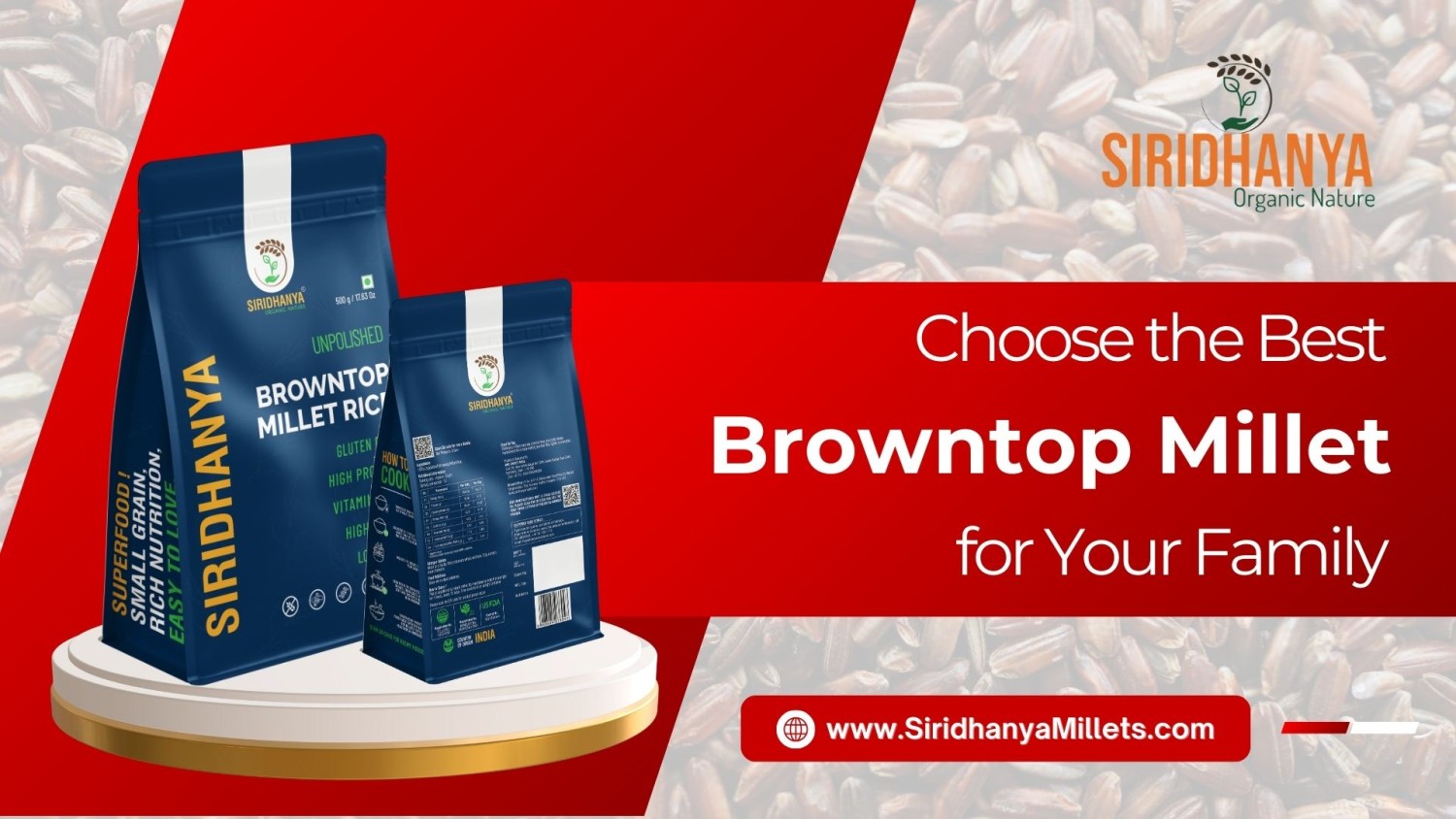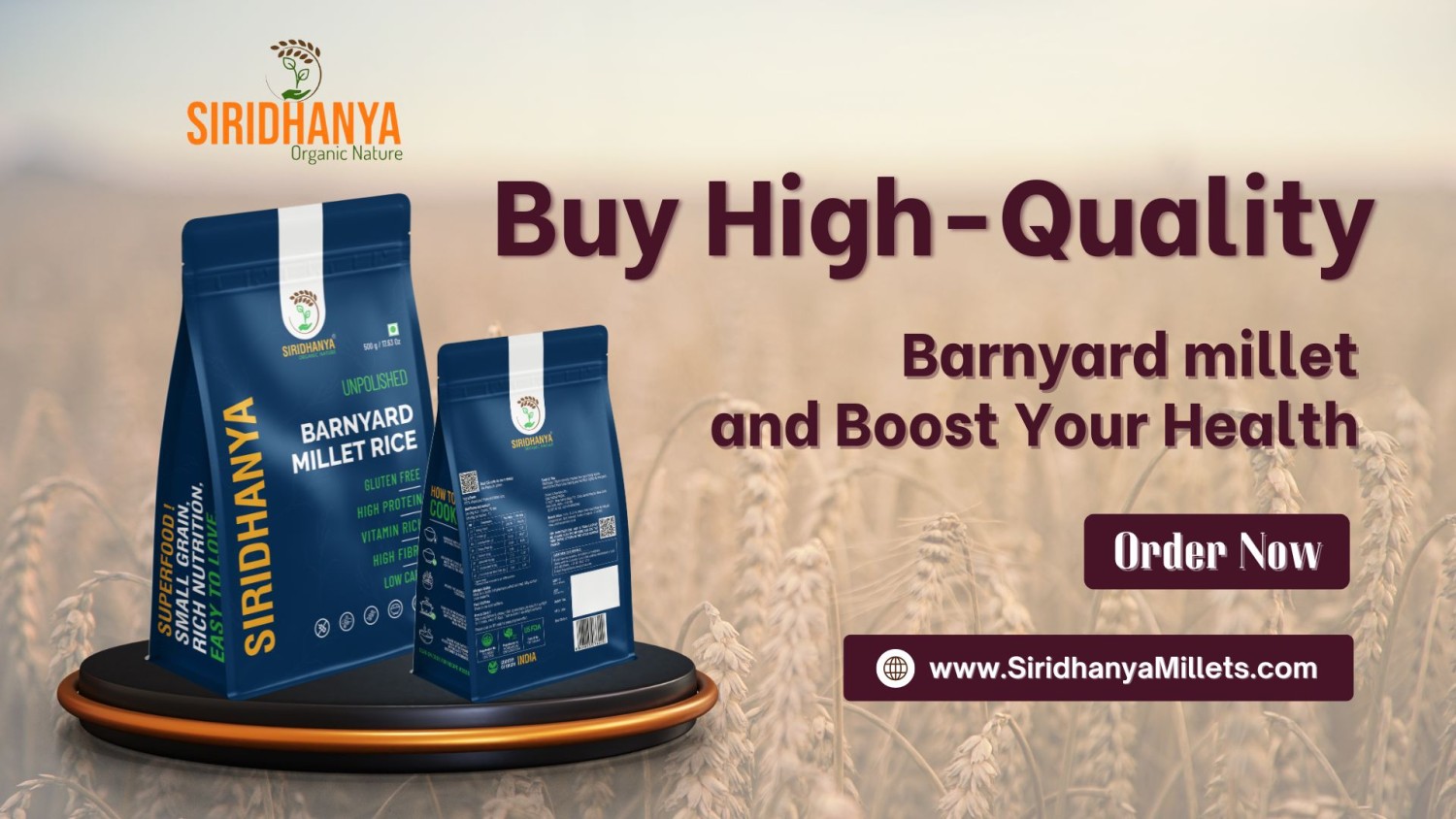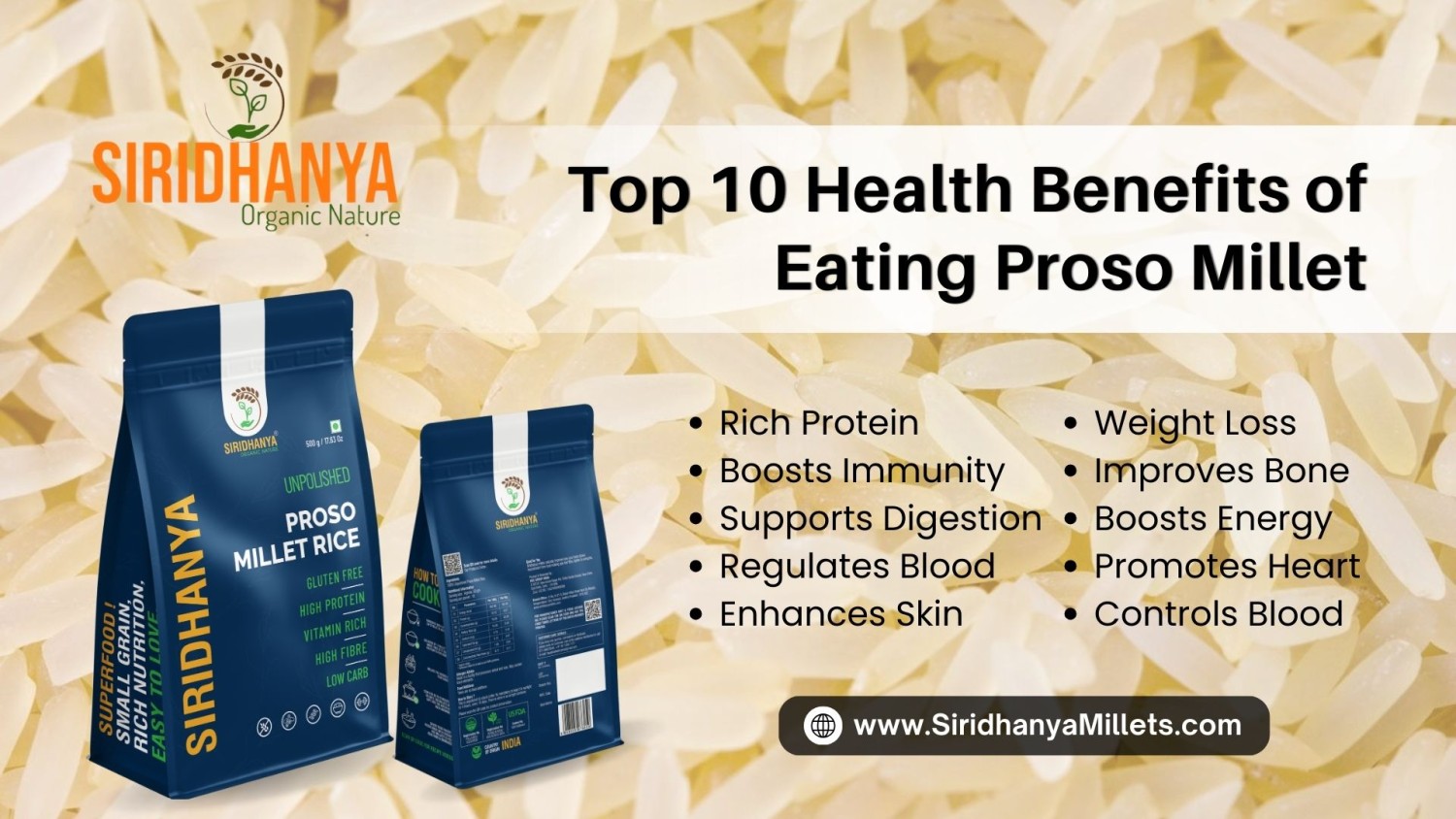What Are the Different Types of Millets and Their Benefits?
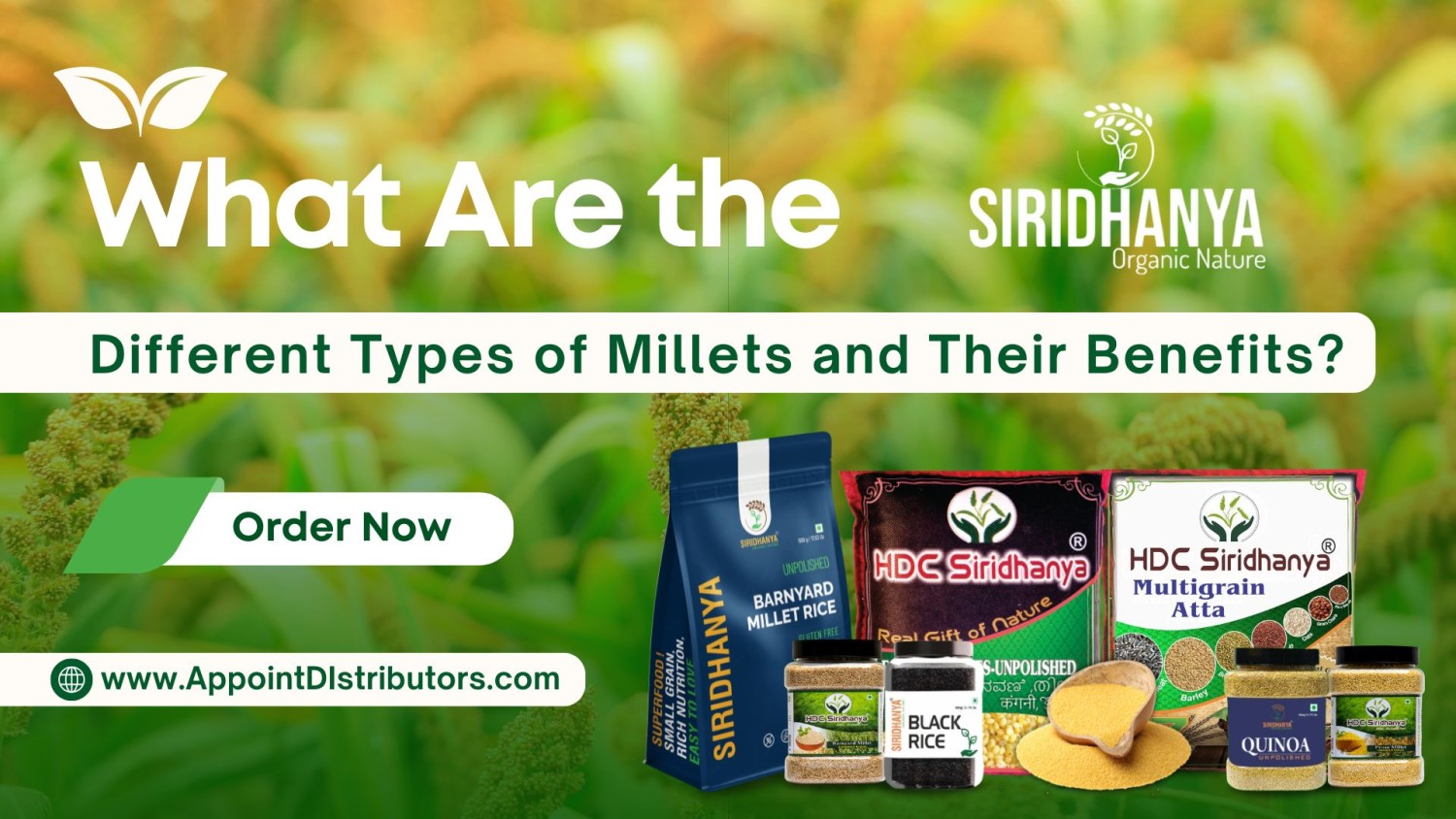
In a world that’s increasingly turning toward healthier and more sustainable food choices, millets are making a strong comeback. These ancient grains, once considered food for the poor, are now being embraced as superfoods due to their impressive nutritional profile and health benefits. From managing weight to regulating blood sugar, millets are a powerhouse of goodness.
But what exactly are millets? And what makes them so special? Let’s explore the different types of millets and how they can boost your health and well-being.
What Are Millets?
Millets are small-seeded grasses that have been cultivated for thousands of years. They are drought-resistant, require minimal irrigation, and grow well in arid regions. This makes them a sustainable crop, especially important in an era of climate change. Beyond environmental benefits, millets are naturally gluten-free, rich in fiber, packed with essential nutrients like magnesium, phosphorus, iron, and B vitamins, and are a great alternative to refined grains like white rice or wheat.
There are two broad categories of millets:
-
Major Millets – These are widely cultivated and consumed, such as Pearl Millet (Bajra), Finger Millet (Ragi), and Sorghum (Jowar).
-
Minor Millets – These include Foxtail Millet, Barnyard Millet, Little Millet, and Kodo Millet, often used in traditional and regional cuisines.
1. Ragi (Finger Millet)
One of the most popular millets in India, Ragi is a nutritional dynamo. It's especially rich in calcium, making it excellent for bone health. Ragi is often the first solid food given to infants in South India for this very reason.
Benefits of Ragi:
High in calcium and iron
-
Good for bone development
-
Controls diabetes due to low glycemic index
-
Aids in weight loss by keeping you full for longer
-
Naturally gluten-free, making it ideal for those with gluten intolerance
You can consume Ragi in the form of porridge, dosas, idlis, or even baked goods.
2. Bajra (Pearl Millet)
Bajra is another widely consumed millet in India, especially during the winter months. It’s rich in fiber, protein, and essential minerals like magnesium and iron.
Benefits of Bajra:
Supports heart health by lowering cholesterol
-
Helps in managing diabetes due to its complex carbohydrates
-
Boosts energy levels and digestion
-
Strengthens the immune system
-
Keeps you warm in winter, making it ideal for seasonal diets
Bajra rotis are a staple in many Indian households and can be paired with ghee, jaggery, or seasonal vegetables.
3. Foxtail Millet
Foxtail millet, also known as Kangni or Thinai, is fast gaining popularity among health-conscious consumers. It's high in dietary fiber and low in fat, which makes it a great grain for daily consumption.
Benefits of Foxtail Millet:
Helps in reducing cholesterol
-
Supports heart health
-
Excellent for weight management
-
Aids in detoxification due to its antioxidant properties
-
Regulates blood sugar levels
It’s easy to incorporate foxtail millet into your diet through upma, khichdi, or even millet-based salads.
4. Kodo Millet
Kodo millet, traditionally known as Arikelu, is a lesser-known but highly nutritious grain. It’s particularly beneficial for those with metabolic disorders.
Benefits of Kodo Millet:
Helps control blood sugar levels
-
Promotes gut health with high fiber
-
Aids in weight loss
-
Reduces inflammation in the body
-
Suitable for celiac patients as it's gluten-free
You can use Kodo millet just like rice or prepare delicious dishes like pongal or pulav with it.
5. Little Millet
Little millet, or Kutki, is a small but powerful grain that can easily replace rice in your meals.
Benefits of Little Millet:
Helps in digestion and improves gut health
-
Keeps you full for longer, aiding in weight management
-
Good for people with diabetes
-
High in antioxidants, which fight aging and disease
-
Provides a good source of B vitamins
Little millet is perfect for cooking pulao, pongal, or even as a base for stir-fry dishes.
6. Barnyard Millet
Known as Sanwa in Hindi, Barnyard millet is a great fasting food and is rich in fiber and iron.
Benefits of Barnyard Millet:
Naturally low in calories
-
Excellent for cardiovascular health
-
Helps regulate thyroid functions
-
Maintains healthy hemoglobin levels
-
Boosts metabolism
This millet is a great choice for preparing fasting recipes like millet upma or kheer.
Why Should You Include Millets in Your Diet?
Millets are far more nutritious than many processed grains and offer a wide variety of health benefits:
-
Heart health: Rich in magnesium and potassium
-
Diabetes management: Low glycemic index helps regulate blood sugar
-
Weight loss: High fiber content keeps hunger at bay
-
Digestive health: Prevents constipation and bloating
-
Gluten-free: Perfect for people with celiac disease or gluten intolerance
Incorporating a mix of different millets in your weekly meal plan can ensure balanced nutrition and introduce diverse flavors to your plate.
How to Add Millets to Your Daily Routine
The versatility of millets means you can easily include them in:
-
Breakfasts (like millet porridge or dosas)
-
Lunches (like millet khichdi, pulav, or rotis)
-
Snacks (like millet cookies or energy bars)
-
Dinners (like millet salad bowls or soups)
Switching to millets doesn’t have to be hard—it’s all about making smart swaps and exploring new recipes.
Where to Buy Millets?
With the increasing demand, millets are now easily available both offline and online. If you’re looking to get started or restock your pantry with clean, high-quality millets, you can buy millets online. Order on SiridhanyaMillets.com for a wide variety of options and doorstep delivery.
Conclusion
Millets are truly a gift from nature—nutritious, sustainable, and versatile. Whether it’s Ragi for stronger bones, Bajra for winter warmth, or Foxtail Millet for heart health, there’s a millet for everyone and every need. Incorporating millets into your daily diet can be a small step with huge health benefits.
With the world waking up to the importance of ancient grains, now’s the perfect time to make the switch. Go ahead—explore, experiment, and enjoy the wholesome benefits of millets.

